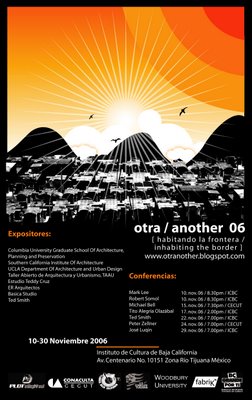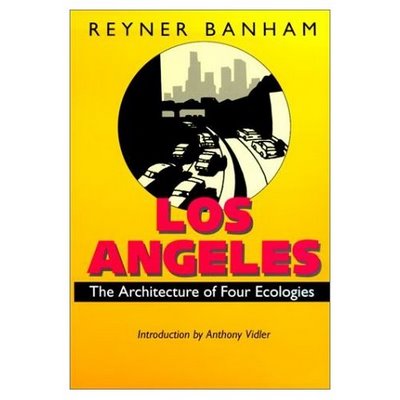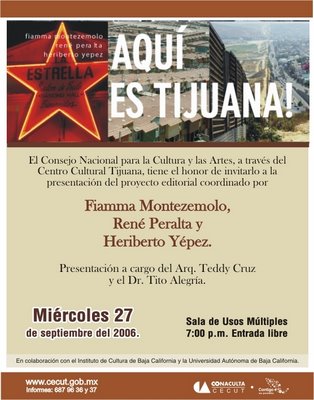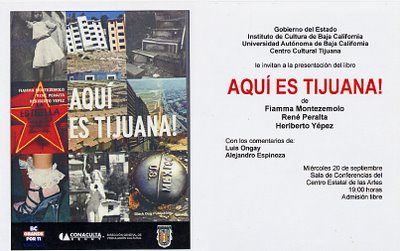Author: Rene
Up and down or side to side?
I have been thinking about the dichotomy between Horizontal and Vertical. A few weeks ago I witnessed an interested presentation by the Venezuelan artist Alexander Apostol in Marcos Ramirez now famous studio space – Estacion Tijuana. Apostol work documents and manipulates images of modernist structures in
“As Apóstol re-appropriates, re-contextualizes, and sometimes even digitally manipulates images of Modernist edifices in a current state of dilapidation, he attempts to reconcile the ideological failings of the past with the socio-political and economic realities of the present.”
In a dramatic images he illustrates the disparity of modern form against squatter structures (chabolas) ramming into vertical high rise buildings, a confrontation of horizontal economy and vertical ideology. As we all know modernist ideals where absolute and their interpretation as a state ethos created conditions of gentrification more than social change. Within the landscape of Latin American, modernism was the ideal form to bring forth a universal and prosperous image (in many cases it came hand in hand with a surplus of petro-dollars) –verticality became a symbol of progress.
In other cities such as NY and Chicago verticality was adopted without the ideological baggage of European theorists as Rem points out in Delirious New York. Inventions such as the elevator promoted stacking and a new urban condition of maximizing land and program – in an economic system that made use of them meanwhile cities such as NY became economic capitals of the world. Verticality was emancipating – the Vertical was the new frontier. In other American cities such as LA verticality never took a stronghold (the intent to resuscitate downtown has been an ongoing ordeal) as Reyner Banham described, LA for many was the antithesis of urbanity, its forming ecologies had mostly to do with the integration of the ground plane, be it valleys, canyons, ocean and the horizontal and extensive freeway systems. Here again in one view the vertical became a symbol of capitalist system and horizontality became a liberating social apparatus – sprawl makes me happy.
In contemporary architectural thought the issue of power is still latent, the avant-garde currents have intended to promote a non hierarchical way of organizing space. Deluzian references to the smooth vs. the striated and the rhizome have been the form by which this current practices (critical or projective) “extends” their influence over space. My interrogative consists in analyzing the current status of political and social structures of the horizontal and vertical. Can we engage once more in the issue of power and built form as Foucault did with the panoptic (vertical) and/or deal with horizontality as the social practice in lower class settlements due to economic and social disparity. Is sprawl the demise of urban form and the product of late capitalism, therefore is returning to density once again the panacea of responsible development?
Ayer se presento Aqui es Tijuana en el Centro Estatal de las Artes en Mexicali. Con un buen numero de publico y los presentadores Cachanillas Luis Ongay y Alejandro Espinosa (que se les agradece por su participación).
Se me quedan muy marcadas dos cosas; una la constante critica de ver esta publicación como un compendio final, como una mirada absoluta y tal ves una metodología pseudo académica. Para los presentadores es una representación(es) o “snapshots” de los clichés tijuaneneses de los últimos años, un libro dentro de aquellos que tienen un “shock value” como su primera intención – a tal grado que uno de los presentadores narra que Tijuana – le da miedo. Dentro el segundo comentario Aquí es Tijuana es el final de la Tijuanologia – me imagino que se refiere a la incesante flujo de imágenes, textos, libros y exposiciones sobre esta ciudad en los últimos años. Pero en lo personal Aquí es Tijuana intenta hacer un recuento del tiempo-espacio de lo intrico que son la relaciones sociales y urbanas de una ciudad al final del sigloXX. Si como dice Christopher Alexander “ a city is not a tree” entonces es rizoma, raíz – un entrelace del event-space. Y si hay algo en común entre los tres autores – es la idea que Tijuana es un ensamble de correlaciones intricas al nivel antropológico, mental y urbano que se desenvuelve en un estado psicogeografico, una ficcion, una tragedia, una comedia – a bad trip- . Tijuana siempre cree que es otra – por que nunca puede ser Tijuana. It’s too scary.
Al final la pregunta mas comprometedora de la noche fue – ya que conoces Tijuana y si tuvieras una imagen de Mexicali cual fuera? Conteste “La Romurosa”.
Here is Tijuana. Fiamma Montezemolo, Rene Peralta, Heriberto Yepez.
London: Black Dog Publishing, 2006.
(Book Review)
Tarek Elhaik
Visiting Assistant Professor
Department of Anthropology
Rice University
As one leafs through the visually rich pages of HERE IS TIJUANA one cannot miss both the sovereign attempt to represent a City and the setting in motion of the irony and limit of that very effort. It brings the very Benjaminian notion of a gesture to bear upon the set of difficulties and perverse pleasures that arise from this remarkable effort to grapple with, visually and discursively, such an intense collective space of enunciation as Tijuana.
The multiplicity of images range from everyday public life practices to the hustle-and-bustle of street and nightlife to aerial photos of biopoliticized housing projects to site-specific art interventions to the more intimate interior spaces of bars, pubs and dance halls. The book is briefly introduced as a collective project in the prologue by the authors who reappear in the form of cameo appearances disseminated amidst citations, statistical data, and images that over the years have caught their attention and curiosity.
The post-9/11 US-Mexico border City appears both as a biopoliticized entity and an object of affection, at once impersonal and personal. By weaving thus visually pleasing and jarring material, Montezemolo (the Anthropologist), Peralta (the Architect) and Yepez (the Philosopher)—friends and scholars of different academic trainings and backgrounds —have managed a tour de force by gesturing towards non-academic and non-analytical forms to engage and organize anthropological, urban, architectural, literary, artistic and theoretical material. On the surface of carefully selected and point-and-shoot images, one ‘senses’ not so much the celebration of a polyphonic city in the throes of chaos, but the beginning of a tender and affectionate laughter one directs at oneself, at one’s native city or research site, and at the impossibility of such representational strategies as visual polyphony.
The book is a fantastic treat for visual anthropologists, anthropologists of art, visual artists, architects and readers from all walks of life who delight in the omnivorous pleasure of reading, gazing at and consuming images in travel agencies, seminar rooms, site-specific interventions or gallery art installations. Or simply as they sit on a toilet bowl or drink coffee on a boring Sunday morning. Far from the pretensions one often finds in historicizing attempts of the conventional cultural-visual histories, the gesture of the authors of HERE IS TIJUANA contributes and extends the raison d’etre of a much more provocative attitude: that of the Dadaists who made it a playful bad habit of getting together with friends in order to exquisitely and creatively kill boredom. That and much more is one of the merits of this fantastic interdisciplinary and collective experiment that, for the purposes of anthropology at least, blurs the boundaries of ‘visual anthropology’ and ‘anthropology of art’, and surely will inspire anthropologists to embark on collective projects not only at ease with images but that also make art.
Otra – Again
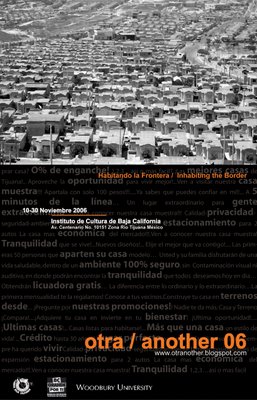
En proceso. pasen al blog de otra/another para mas informacion. el 10 de noviembre los esperamos en el instituto de cultura de baja california.
BIG NEWS
Por fin llegaron los ejemplares en español de Aquí es Tijuana. El lunes pase al Centro Cultural a recoger las cajas. A las personas que colaboraron con imágenes por favor pasen a mi oficina por su ejemplar. Estoy en Aguascalientes 2332 Colonia Cacho – a lado de la imprenta victoria.
La presentación oficial se va a realizar en tres sesiones: en Mexicali el día 20 de Septiembre a las 19 horas en la Sala de Conferencias del Centro Estatal de las Artes – en Tijuana el día 26 de Septiembre a las 19 horas en el Centro Cultural Tijuana y el 27 de Septiembre a las 11am en la UABC. El 28 de Septiembre estaré presentando el libro en USC en Los Ángeles (por confirmar).
What’s the big fuzz about?
According to the latest article in the NY Times about
If you sit for dinner at any deluxe hotel restaurant in NY and order a caesar salad while the music playing in the piano-bar is the jazz standard Kansas City Stomp written by Jerry Roll Morton, it might not be so special until you realize they where both created in Tijuana long before the city was hot and hip.
Last but not least – De Young
El Museo de Young diseñado por los arquitectos Herzog & de Meuron (Premio Pritzker 2001) fue construido en los que es el central park de SF , el paisaje lo encierra y crea una intima relación con la fachada de cobre que a veces es traslucida y en otras partes sólida. Un juego de textura – un proyecto bastante estético que al final logra, por su piel porosa, vincular el exterior con el interior.

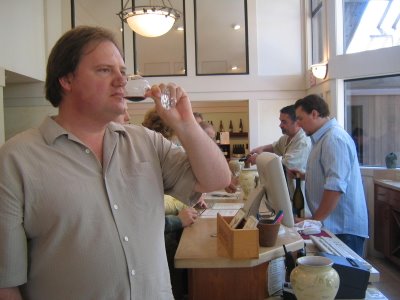
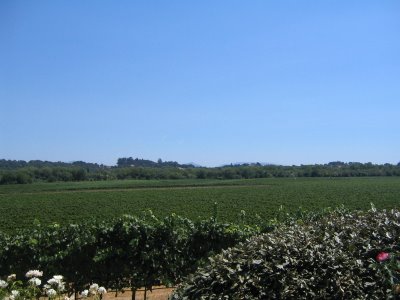
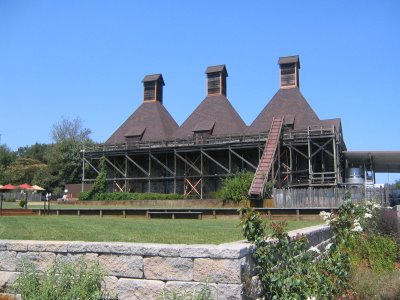
Sonoma Valley y sus vinos – que mas puedo decir – excelente

